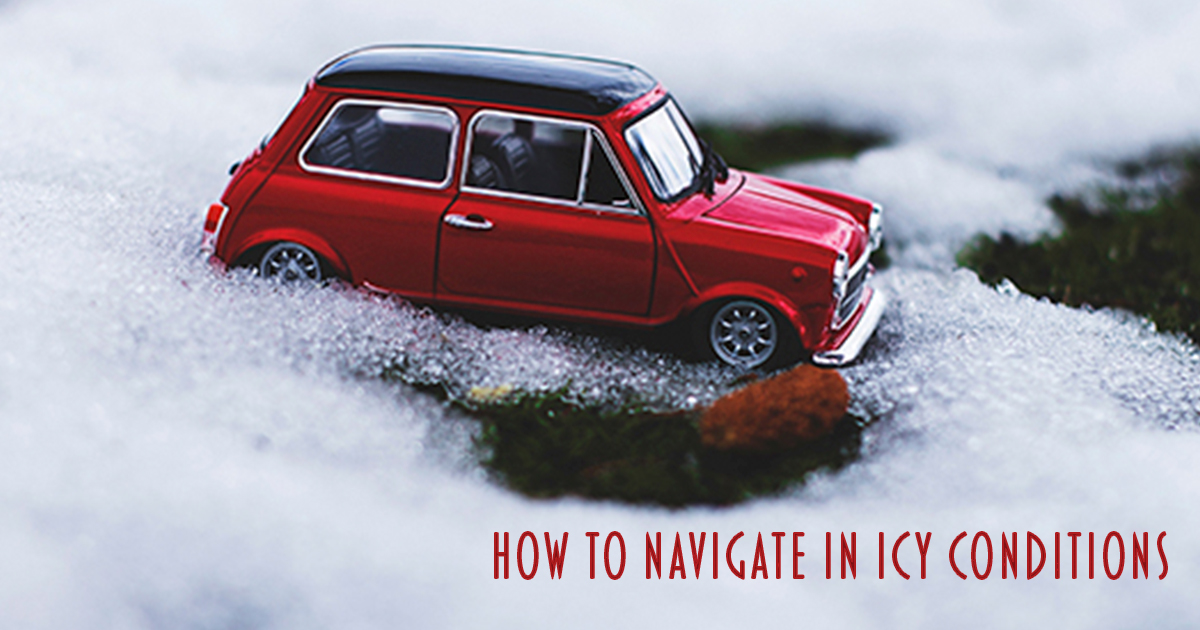How to Navigate in Icy Conditions

How to Navigate in Icy Conditions
Ice. The word can strike fear into the hearts of experienced drivers as well as new ones. Slippery icy roads are one of the most difficult conditions you’ll face as a driver, but in this article we help you be prepared to navigate icy conditions like a pro.
Practice driving on ice. Yes, it sounds crazy. Didn’t we just agree that driving on ice is dangerous? Why would you purposely do it? Because you can control the practice conditions—you’re prepared, you have an experienced driver by your side that can guide you, and you can practice when there are no other vehicles around.
Forget what you thought you knew. When you drive a vehicle for some time, you get used to how it responds. You know when to accelerate, how it handles a turn, and how long it takes you to brake. When driving on ice, though, all the rules change. Your vehicle will not respond the way you expect.
Learn how your vehicle navigates in icy conditions. Your vehicle may have special systems to help you deal with snow or ice that you rarely use. If you have traction or stability control or an ABS system, understand how they work before icy weather starts so you can be ready to help your vehicle through an icy patch.
What to do . . . and what not to do. Remember: Don’t panic. Don’t hit the brakes hard. Don’t accelerate. Don’t hit the gas pedal. However, you do want to: Steer in the direction you want to go and be patient while your vehicle slows down, gains traction, and then straightens out.
Read the road. When there might be ice on the road, avoid changing the direction of your vehicle in a hurry. Slow down ahead of time when you need to turn or go around curves. Certain areas of roadways will be more prone to icing over, such as shadowy areas under a tree canopy. Surfaces on bridges tend to freeze faster, with airflow going above the road surface and also below the bridge structure, so be especially cautious.
Be aware of black ice. Can you always see ice? No. Black ice may simply look like a wet road surface. It forms when temperatures drop to freezing or below and there’s moisture from rain or snow. This may happen in the evening as temperatures drop, so be aware of black ice to be prepared for it.
- 2023
- 2022
- 2021
- 2020
- 2019
- 2018
- 2017
